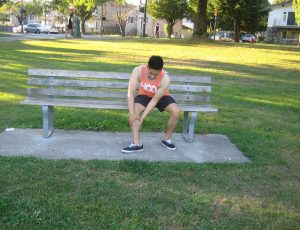Grazes is a prevalent injury that happens when slipping or falling. They are not usually serious but at risk for infection if not properly treated. Grazes affects the surface of the skin can result to bleeding and pain and the area will generally scab and recuperate.
If the graze happens in the body that is constantly in motion such as the joint of the knee, takes a longer time to recover.
Symptoms of graze
- Loss of sensation if a nerve is cut
- Increasing pain in the wound
- Bleeding where blood spurts from the wound if an artery is injured
- Swelling of the affected area
- Fever and swelling lymph nodes
- Formation of pus in and around the area
- Redness that spreads from the graze or erythema
- Feeling general unwell
Bleeding where blood spurts from the wound if an artery is injured.
Treatment
- Before touching the wound, wash hands using warm tap water using antibacterial soap for at least 20 seconds. Rinse the hands and dry them using a clean and dry towel.
- Remove any foreign objects from the graze before cleaning the wound to prevent development of infections.
- Stop any bleeding. If a graze is minor, bleeding will stop on its own. If the bleeding does not stop, apply pressure on the wound using a sterile bandage or a cloth. If the graze happens on the hand or arm, elevate or raise the raise the area above the head. If it happens in the lower limb, lie down and elevate the area above the level of the heart to lessen and stop the bleeding.
- Once the bleeding subsides, clean the graze to prevent development of infection. Place the affected area under tap running water. Avoid using antiseptic to prevent further irritation on the skin and worsen the condition. When the wound is already clean, pat it dry using a clean towel.
- Take the prescribed over-the-counter medications such as paracetamol or ibuprofen to lessen the pain caused the pain and the inflammation. Avoid giving aspirin to children to prevent the development of Reye’s syndrome.
- Apply the prescribed over-the-counter antibiotic cream or ointment to prevent infections and for fast healing of the condition. Cover the wound using a non-stick pad or non-stick gauze. It will not stick to the wound or pulling off the skin when removing it. Cover the whole graze and the skin surrounding the affected area.
- Keep the wound moist by applying prescribed antibacterial cream while it heals. It will prevent pulling apart of the skin when moving and worsen the condition.
- Change dressing regularly at least once every day to prevent the risk of developing infection.
Disclaimer / More Information
The material posted on this page on a graze is for learning purposes only. Learn to properly manage this common injury by taking a first aid and CPR class with one of our training providers.

